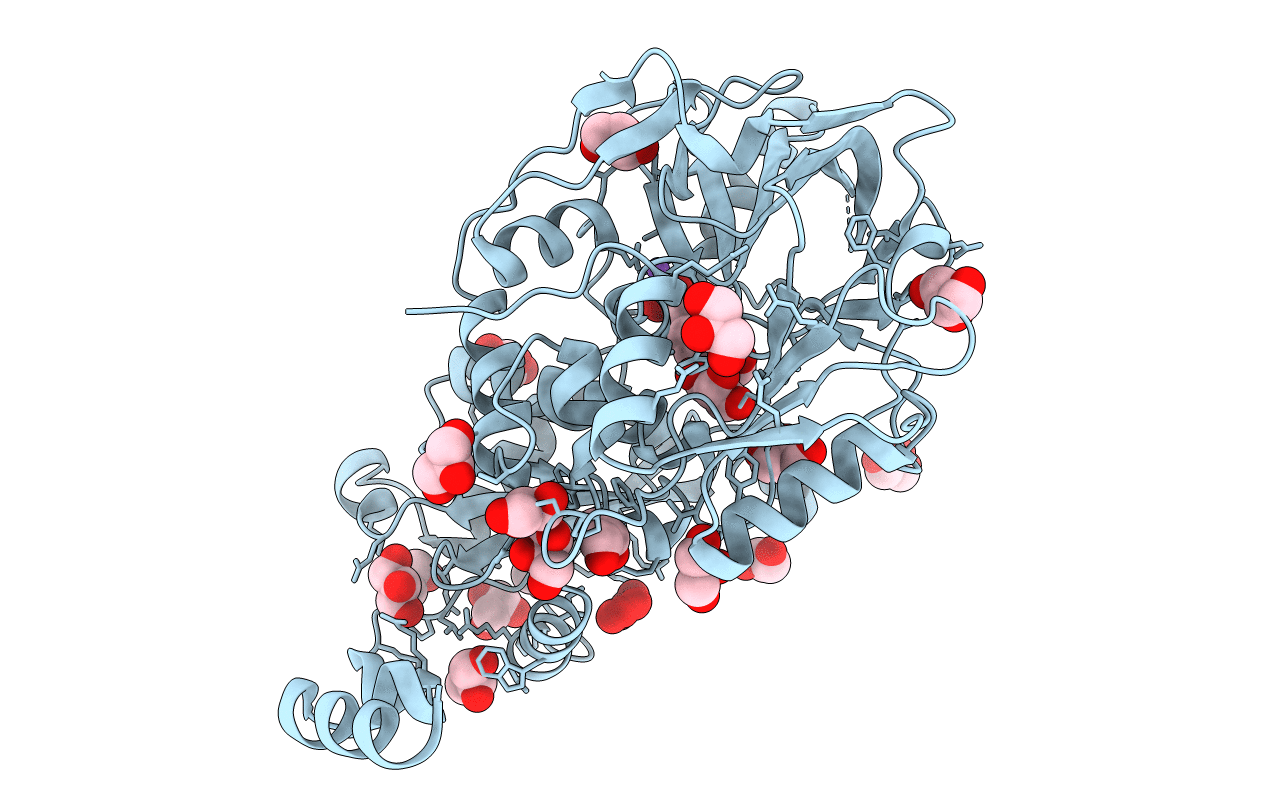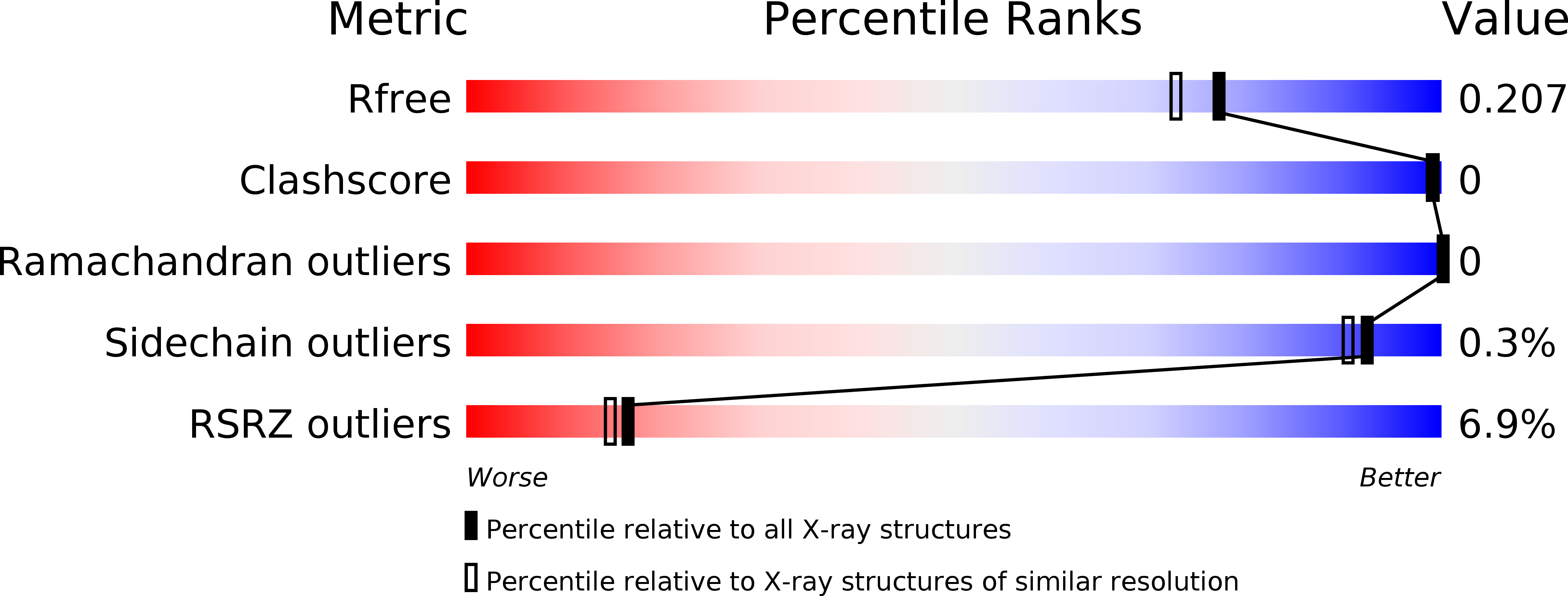
Deposition Date
2018-05-01
Release Date
2018-10-03
Last Version Date
2023-10-04
Entry Detail
PDB ID:
6DA7
Keywords:
Title:
Crystal structure of the TtnD decarboxylase from the tautomycetin biosynthesis pathway of Streptomyces griseochromogenes with apo form at 1.83 A resolution (I222)
Biological Source:
Source Organism:
Streptomyces griseochromogenes (Taxon ID: 68214)
Host Organism:
Method Details:
Experimental Method:
Resolution:
1.83 Å
R-Value Free:
0.21
R-Value Work:
0.18
R-Value Observed:
0.19
Space Group:
I 2 2 2


